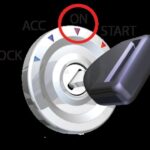OBD2, or On-Board Diagnostics II, is a standardized system that allows external devices to access a vehicle’s diagnostic and performance data. But what exactly is the OBD2 interface? This comprehensive guide delves into the intricacies of OBD2, covering its history, functionality, the OBD2 connector, communication protocols, and future trends.
OBD2: Your Vehicle’s Diagnostic System
OBD2 acts as your vehicle’s built-in self-diagnostic system. It monitors various systems and components, detecting malfunctions and storing diagnostic trouble codes (DTCs). These DTCs, along with real-time data like speed, engine RPM, and fuel levels, can be accessed via the OBD2 interface using a diagnostic scanner. This allows mechanics and vehicle owners to quickly identify and troubleshoot issues.
The OBD2 Connector: A Gateway to Vehicle Data
The OBD2 interface is physically accessed through a standardized 16-pin connector, often located near the steering wheel. This connector, defined by SAE J1962/ISO 15031-3, provides a consistent point of access for diagnostic tools.
Each pin on the connector has a specific function, including power supply, ground, and communication lines for various protocols. The most commonly used pins for communication are pin 6 (CAN High) and pin 14 (CAN Low), as CAN bus is the prevalent communication protocol for OBD2 in modern vehicles. There are two main types of OBD2 connectors:
- Type A: Commonly found in passenger cars, utilizing a 12V power supply.
- Type B: Typically used in heavier vehicles like trucks and buses, providing a 24V power supply.
OBD2 Communication Protocols: Speaking the Vehicle’s Language
While the OBD2 connector provides the physical interface, various communication protocols facilitate data exchange. Although several protocols have been used historically, CAN bus (ISO 15765-4) is the mandated standard for OBD2 in US cars since 2008. ISO 15765-4 defines specific parameters for communication:
- Bit Rates: 250Kbps or 500Kbps.
- CAN Identifiers: 11-bit or 29-bit.
- Data Length: 8 bytes per frame.
OBD2 Data: Modes and PIDs
OBD2 data is organized into modes and Parameter IDs (PIDs). Modes represent different diagnostic services, such as retrieving current data (Mode 01), freeze frame data (Mode 02), and diagnostic trouble codes (Mode 03). Within each mode, PIDs specify the individual parameters being requested, like vehicle speed (PID 0D) or engine RPM (PID 0C).
The Future of OBD2: Evolution and Challenges
OBD2 continues to evolve, with trends like OBD3 (incorporating telematics for remote diagnostics) and the increasing use of UDS (Unified Diagnostic Services) on the horizon. However, challenges remain, including:
- Limited Data for Electric Vehicles: Current OBD2 standards don’t adequately address the diagnostic needs of electric vehicles, which often rely on proprietary protocols.
- Potential Restrictions on Access: Concerns about security and data control have led to proposals to restrict third-party access to OBD2 data in the future.
Conclusion: OBD2’s Vital Role in Vehicle Diagnostics
The OBD2 interface is a critical component of modern vehicle diagnostics, enabling efficient troubleshooting and maintenance. Understanding its core elements—the connector, communication protocols, and data structure—is essential for anyone working with vehicle diagnostics. As technology progresses, OBD2 is expected to adapt and continue playing a vital role in the automotive industry. While challenges and potential limitations exist, the future of OBD2 promises further advancements in vehicle diagnostics and data accessibility.

